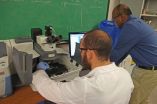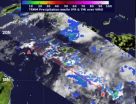(Press-News.org) COLUMBIA, Mo. –Nearly 40 percent of breast cancer survivors suffer from lymphedema, a chronic condition that causes body limbs to swell from fluid buildup, as a result of lymph node removal and radiation therapy. A cure for lymphedema does not exist, so individuals with the condition must find ways to manage the symptoms throughout their lifetimes. Now, a team of researchers and clinicians working with a University of Missouri lymphedema expert has found that full-body exercise and complete decongestive therapy (CDT) are the best ways for patients to minimize their symptoms and maintain their quality of life.
"There's a sense of empowerment—of autonomy—that comes from meeting the challenge of living with lymphedema," said Jane Armer, an MU nursing professor. "Some breast cancer survivors say that they've become a new person after cancer because they met a challenge, and they like the stronger person they've become. The challenge of lymphedema is similar. It's something that is pervasive in every part of life. It takes problem solving and persistence to manage the condition without letting it interfere with their goals."
Armer and her colleagues reviewed published research about lymphedema self-management in order to determine which practices were most effective in managing the condition. The researchers found that full-body exercise, such as weight lifting and stretching, was likely to be effective in minimizing lymphedema symptoms. In addition, the researchers concluded that complete decongestive therapy (CDT), a comprehensive treatment approach that incorporates skin care, exercise, manual lymphatic drainage and bandaging of swollen limbs, also helps patients effectively manage the condition.
"Previous research suggests that, the earlier the interventions, the better the outcomes," Armer said. "If patients can learn how to successfully manage the condition early on, then they can continue those processes throughout their lives, and their outcomes will be better than those of individuals who resist participating in self-care."
###
Armer is a professor in the MU Sinclair School of Nursing and director of nursing research at Ellis Fischel Cancer Center. The literature review, "Self-Management of Lymphedema," recently published in Nursing Research, was led by nurse colleagues, Sheila Ridner, professor at Vanderbilt University School of Nursing, and Mei Fu, associate professor at New York University College of Nursing and MU nursing alumna. The review is the fifth in a series of 12 to be published in conjunction with the American Lymphedema Framework Project (ALFP). Another literature review, "A Systematic Review of the Evidence for Complete Decongestive Therapy in the Treatment of Lymphedema From 2004 to 2011," was published by the American Academy of Physical Medicine and Rehabilitation earlier this year. This review was led by expert lymphedema clinicians and educators, Bonnie Lasinski, Long Island, N.Y.; Kathryn Thrift, Dallas; and DeCourcy Squire, Atlanta.
As director of the ALFP, Armer works alongside clinical experts and investigators to increase awareness of lymphedema and related disorders. The ALFP was founded in 2008 and is headquartered at the MU Center for Lymphedema Research, Practice and Health Policy. Its steering committee and staff currently are partnering with the International Lymphedema Framework (ILF) in producing an updated edition of the ILF Best Practice Document from 2006.
Exercise and complete decongestive therapy best ways to manage lymphedema, MU expert says
Living with chronic condition requires patients to use comprehensive self-care practices
2012-10-23
ELSE PRESS RELEASES FROM THIS DATE:
Climate variability and conflict risk in East Africa measured by Boulder team
2012-10-23
While a new study led by the University of Colorado Boulder shows the risk of human conflict in East Africa increases somewhat with hotter temperatures and drops a bit with higher precipitation, it concludes that socioeconomic, political and geographic factors play a much more substantial role than climate change.
According to CU-Boulder geography Professor John O'Loughlin, the new CU-Boulder study undertaken with the National Center for Atmospheric Research in Boulder is an attempt to clarify the often-contradictory debate on whether climate change is affecting armed ...
Evolution of new genes captured
2012-10-23
Like job-seekers searching for a new position, living things sometimes have to pick up a new skill if they are going to succeed. Researchers from the University of California, Davis, and Uppsala University, Sweden, have shown for the first time how living organisms do this.
The observation, published Oct. 19 in the journal Science, closes an important gap in the theory of natural selection.
Scientists have long wondered how living things evolve new functions from a limited set of genes. One popular explanation is that genes duplicate by accident; the duplicate undergoes ...
Rapid changes in the Earth's core: The magnetic field and gravity from a satellite perspective
2012-10-23
Annual to decadal changes in the earth's magnetic field in a region that stretches from the Atlantic to the Indian Ocean have a close relationship with variations of gravity in this area. From this it can be concluded that outer core processes are reflected in gravity data. This is the result presented by a German-French group of geophysicists in the latest issue of PNAS (Proceedings of the National Academy of Sciences of the United States).
The main field of the Earth's magnetic field is generated by flows of liquid iron in the outer core. The Earth's magnetic field protects ...
New Stanford analysis provides fuller picture of human expansion from Africa
2012-10-23
A new, comprehensive review of humans' anthropological and genetic records gives the most up-to-date story of the "Out of Africa" expansion that occurred about 45,000 to 60,000 years ago.
This expansion, detailed by three Stanford geneticists, had a dramatic effect on human genetic diversity, which persists in present-day populations. As a small group of modern humans migrated out of Africa into Eurasia and the Americas, their genetic diversity was substantially reduced.
In studying these migrations, genomic projects haven't fully taken into account the rich archaeological ...
Milky Way's black hole getting ready for snack
2012-10-23
Get ready for a fascinating eating experience in the center of our galaxy.
The event involves a black hole that may devour much of an approaching cloud of dust and gas known as G2.
A supercomputer simulation prepared by two Lab physicists and a former postdoc suggests that some of G2 will survive, although its surviving mass will be torn apart, leaving it with a different shape and questionable fate.
The findings are the work of computational physicist Peter Anninos and astrophysicist Stephen Murray, both of AX division within the Weapons and Complex Integration Directorate ...
New self-healing coating for aluminum developed to replace cancer-causing product
2012-10-23
RENO, Nev. – A research team at the University of Nevada, Reno has developed a new environmentally-friendly coating for aluminum to replace the carcinogenic chromate coatings used in aerospace applications. The chromate conversion coatings have been used for more than 50 years to protect aluminum from corrosion.
The team presented their research last week at the international Pacific Rim Meeting on Electrochemical and Solid-State Science in Hawaii.
"It was well received at the conference," Dev Chidambaram, lead scientist and assistant professor of materials science ...
NASA sees 18th Atlantic depression form
2012-10-23
Tropical Depression 18 (TD18) formed over the southwestern Caribbean Sea at 11 a.m. EDT on Oct. 22, and NASA's TRMM satellite saw a "hot towering" thunderstorm near its center of circulation hinting that it could become a tropical storm soon. A tropical storm watch has been issued for Jamaica.
When NASA's Tropical Rainfall Measuring Mission (TRMM) satellite flew over the developing TD18 early on Oct. 22 at 0040 UTC (Oct. 21 at 8:40 p.m. EDT), the satellite measured rainfall rates within the low pressure area and measured cloud heights of the thunderstorms that make up ...
Additive restores antibiotic effectiveness against MRSA
2012-10-23
Researchers from North Carolina State University have increased the potency of a compound that reactivates antibiotics against methicillin-resistant Staphylococcus aureus (MRSA), an antibiotic-resistant form of Staphylococcus that is notoriously difficult to treat. Their improved compound removes the bacteria's antibiotic resistance and allows the antibiotic to once again become effective at normal dosage levels.
NC State chemist Christian Melander had previously proven the effectiveness of a 2-aminoimidazole compound in reactivating antibiotics against resistant bacterial ...
Crusty foods may worsen heart problems associated with diabetes
2012-10-23
URBANA – A University of Illinois study suggests avoiding cooking methods that produce the kind of crusty bits you'd find on a grilled hamburger, especially if you have diabetes and know you're at increased risk for cardiovascular disease because of your diagnosis.
"We see evidence that cooking methods that create a crust—think the edge of a brownie or the crispy borders of meats prepared at very high temperatures—produce advanced glycation end products (AGEs). And AGEs are associated with plaque formation, the kind we see in cardiovascular disease," said Karen Chapman-Novakofski, ...
New study suggests using sedentary behavior counseling in primary care
2012-10-23
HOUSTON – (Oct. 22, 2012) – Although primary care physicians take care of many aspects of health and disease, little is known about how they can change sedentary behavior through counseling, according to researchers at The University of Texas Health Science Center at Houston (UTHealth). Results from a new study suggest encouraging patients to decrease the time they spend sitting each day may be feasible in the primary care setting.
"Reducing sedentary time can be done by virtually everyone and requires smaller changes in energy expenditure than meeting physical activity ...
LAST 30 PRESS RELEASES:
Sports injuries sustained during your period might be more severe
World's first successful 2 Tbit/s free-space optical communication using small optical terminals mountable on satellites and HAPS
Can intimate relationships affect your heart? New study says ‘yes’
Scalable and healable gradient textiles for multi‑scenario radiative cooling via bicomponent blow spinning
Research shows informed traders never let a good climate crisis go to waste
Intelligent XGBoost framework enhances asphalt pavement skid resistance assessment
Dual-function biomaterials for postoperative osteosarcoma: Tumor suppression and bone regeneration
New framework reveals where transport emissions concentrate in Singapore
NTP-enhanced lattice oxygen activation in Ce-Co catalysts for low-temperature soot combustion
Synergistic interface engineering in Cu-Zn-Ce catalysts for efficient CO2 hydrogenation to methanol
COVID-19 leaves a lasting mark on the human brain
Scientists use ultrasound to soften and treat cancer tumors without damaging healthy tissue
Community swimming program for Black youth boosts skills, sense of belonging, study finds
Specific depressive symptoms in midlife linked to increased dementia risk
An ‘illuminating’ design sheds light on cholesterol
Who is more likely to get long COVID?
Study showcases resilience and rapid growth of “living rocks”
Naval Research Lab diver earns Office of Naval Research 2025 Sailor of the Year
New Mayo-led study establishes practical definition for rapidly progressive dementia
Fossil fuel industry’s “climate false solutions” reinforce its power and aggravate environmental injustice
Researchers reveal bias in a widely used measure of algorithm performance
Alcohol causes cancer. A study from IOCB Prague confirms damage to DNA and shows how cells defend against it
Hidden viruses in wastewater treatment may shape public health risks, study finds
Unlock the power of nature: how biomass can transform climate mitigation
Biochar reshapes hidden soil microbes that capture carbon dioxide in farmland
Reducing saturated fat intake shows mortality benefit, but only in high-risk individuals
Manta rays create mobile ecosystems, study finds
Study: Mixed results in using lipoic acid to treat progressive multiple sclerosis
Norbert Holtkamp appointed director of Fermi National Accelerator Laboratory
New agentic AI platform accelerates advanced optics design
[Press-News.org] Exercise and complete decongestive therapy best ways to manage lymphedema, MU expert saysLiving with chronic condition requires patients to use comprehensive self-care practices

